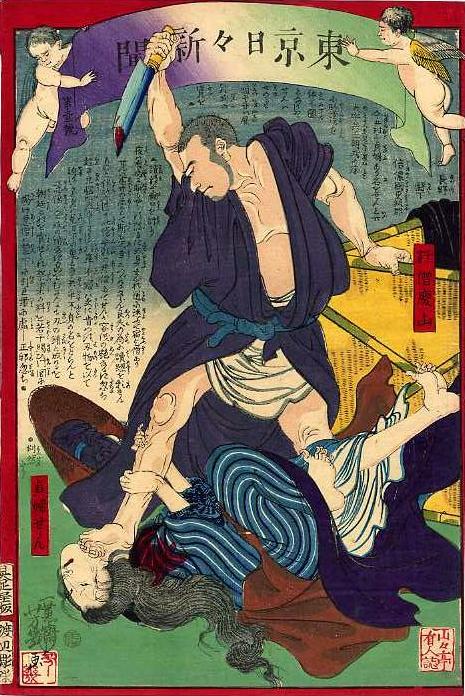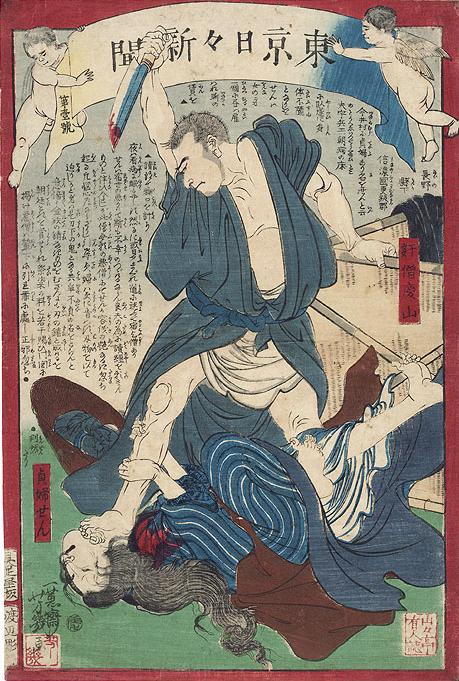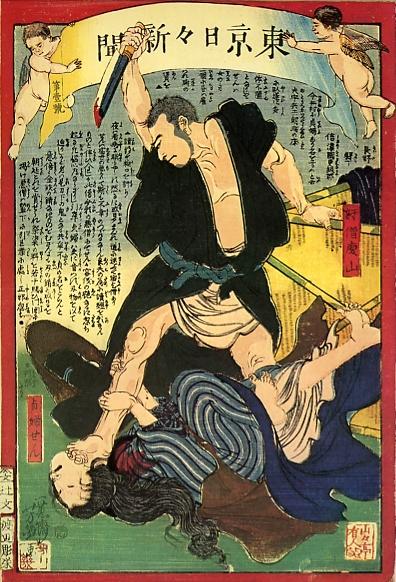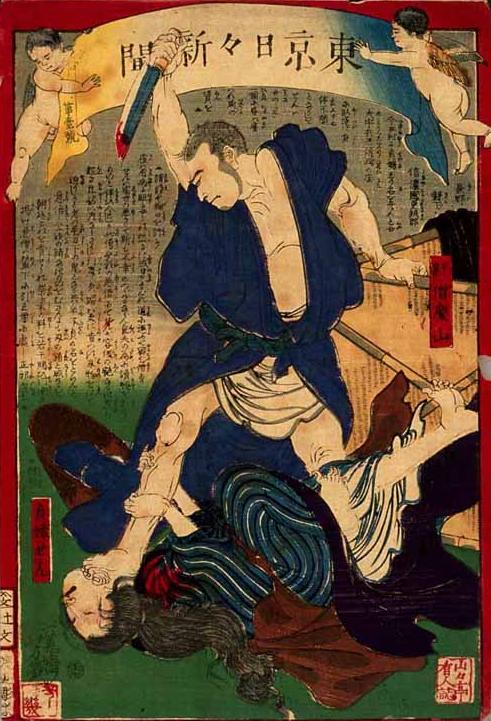|
Tokyo nichinichi shinbun Story in briefThe cartouches identify the itinerant "wicked priest Keizan" [kanzo Keizan] who robs and kills the "virtuous woman Sen" [teifu Sen]. Sen gave Keizan lodging, thinking he would say sutras for her sick husband, then defended her honor when he attacked her. (WW) No. 1 was not the firstJudging from its prevalence in publications, this is probably the most famous TNS print. Its popularity comes partly from the picture and the story, and partly from the fact that it is No. 1. However, the print was not the first to be published. Its number means only that the story on which the nishikie print is based had been reported in the first issue of Tokyo nichinichi shinbun. Both Nos. 220 and 472 have 1874-8 seals, and Nos. 40, 50, 101, 445, 736, and 781 have 1874-9 seals. No. 1, like Nos. 3, 111, 512, 723, 726, and 742, has a 1874-10m seal, which used 卍 (manji) to represent "ju" (十, 10) and preceded the 1874-10x seal, which used Ⅹ (1874-10x). Lag timeAt least eight TNS prints were published before TNS No. 1, which came out no earlier than the third month after the TNS series began. The lag between the Tonichi and TNS versions of the story in No. 1 -- that is, the amount of time that passed between the appearance of the newspaper and nishikie versions -- was roughly 32 months -- nearly three years. The average lag times between Stage 1 TNS prints and their Tonichi sources were 16.5 months for the two 1874-8 prints, 16.8 months for the six 1874-9 prints, and 13.4 months for the nine prints with either 1874-10m or 1874-10x seals. The average lag for ten Stage 2 prints with 1874-10m seals is 6.5 months. Lag time significantly shrinks for prints published after this. This suggests that Gusokuya and his artisans intended TNS to be only a new kind of nishikie souvenir with human interest stories drawn from older news -- and not a newspaper illustrating current events. Only in later stages -- marked by changes in the designs of the cherubs that hold up the banner -- did TNS begin to feature more recent stories. See From souvenirs to news for an analysis of TNS lag times. Gusokuya and Tsujibun editionsAll prints in the main TNS series were first published by Gusokuya. Fifteen prints and counting, including this one, are known to have been republished by Tsujibun. Presumably Gusokuya sold the blocks to Tsujibun. The most salient feature of the Tsujibun reprints is that they seem to represent the most "souvenirish" TNS prints. While Gusokuya's "news nishikie" witnessed a month or two of "promptness" and "regularity" before their demise, they never quite became "nishikie news". Their essential quality as a "commodity" is underscored by the fact that Tsujibun reincarnated only those which appealed to interest other that current events. See Gusokuya and Tsujibun variations for an analysis of what the Tsujibun editions reveal about the true colors and stripes of the TNS series. |
www.wetherall.org



